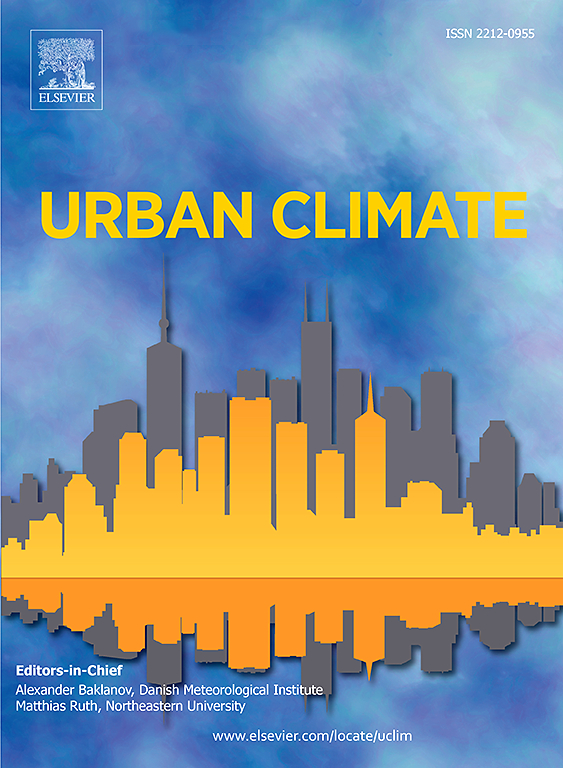Fast estimation and pattern discovery of dynamic vehicle emissions on road networks based on the traffic performance index: A case study of Beijing
IF 6.9
2区 工程技术
Q1 ENVIRONMENTAL SCIENCES
引用次数: 0
Abstract
The estimation of dynamic emissions from mobile sources such as vehicles presents a major challenge in air quality modeling. Current studies indicate strong positive correlations between traffic congestion and emission levels. However, there is a notable lack of research defining the relationship quantitatively. The dynamic and rapid estimation of total emissions from road networks holds critical importance using real-time Traffic Performance Indices (TPIs). This paper focuses on rapidly estimating and identifying patterns in dynamic vehicle emissions across road networks by leveraging TPIs. At first, relationships between vehicle emissions and TPIs are rigorously examined. Subsequently, a quantitative sine function model is developed to characterize the relationship. Finally, employing the SOM neural network algorithm, temporal emission patterns are investigated, and the impact of the COVID-19 pandemic on emissions is assessed. The results demonstrate: 1) Non-linear positive correlations exist between total emissions and TPIs with emissions escalating with increasing TPI; 2) The proposed sine function model predicts total network emissions with average relative errors of 9.26 % for NOx, 9.04 % for HC, 8.86 % for CO2, and 9.02 % for CO; 3) Utilizing the Self-Organizing Map (SOM) neural network clustering algorithm identifies eight emission variation patterns including Holydays, Saturdays, Sundays, Workdays during vacations, Mondays, Fridays, Ordinary workdays, and Congested workdays, which effectively represent 91.54 % of emission scenarios across the network. The findings are expected to broaden TPI applications while providing robust scientific support for integrated policies targeting congestion management and pollution control.
基于交通性能指标的道路网络动态车辆排放快速估计与模式发现——以北京市为例
对车辆等移动源的动态排放进行估计是空气质量建模的一个主要挑战。目前的研究表明,交通拥堵与排放水平之间存在很强的正相关关系。然而,明显缺乏定量定义这种关系的研究。使用实时交通性能指数(tpi)对道路网络的总排放量进行动态和快速估计具有至关重要的意义。本文的重点是利用tpi快速估计和识别道路网络中动态车辆排放的模式。首先,对车辆排放和tpi之间的关系进行严格检查。随后,开发了一个定量正弦函数模型来表征这种关系。最后,采用SOM神经网络算法,研究了时间排放模式,并评估了COVID-19大流行对排放的影响。结果表明:1)总排放量与TPI呈非线性正相关关系,且随TPI的增加而增加;2)正弦函数模型预测网络总排放量的平均相对误差分别为:NOx 9.26%、HC 9.04%、CO2 8.86%、CO 9.02%;3)利用自组织映射(SOM)神经网络聚类算法识别出节假日、周六、周日、节假日工作日、周一、周五、普通工作日和拥堵工作日8种排放变化模式,有效代表了全网91.54%的排放场景。研究结果有望拓宽TPI的应用范围,同时为针对拥堵管理和污染控制的综合政策提供有力的科学支持。
本文章由计算机程序翻译,如有差异,请以英文原文为准。
求助全文
约1分钟内获得全文
求助全文
来源期刊

Urban Climate
Social Sciences-Urban Studies
CiteScore
9.70
自引率
9.40%
发文量
286
期刊介绍:
Urban Climate serves the scientific and decision making communities with the publication of research on theory, science and applications relevant to understanding urban climatic conditions and change in relation to their geography and to demographic, socioeconomic, institutional, technological and environmental dynamics and global change. Targeted towards both disciplinary and interdisciplinary audiences, this journal publishes original research papers, comprehensive review articles, book reviews, and short communications on topics including, but not limited to, the following:
Urban meteorology and climate[...]
Urban environmental pollution[...]
Adaptation to global change[...]
Urban economic and social issues[...]
Research Approaches[...]
 求助内容:
求助内容: 应助结果提醒方式:
应助结果提醒方式:


